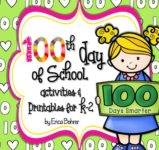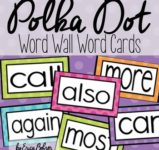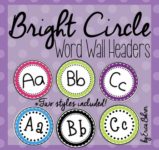I asked Susanne Poulette if she would write a blog post for me on Whole Body Listening. She is the original author of Whole Body Listening and many years ago, she gave me permission to use the term “Whole Body Listening” on my Teachers Pay Teachers freebie. I hope you enjoy reading this blog post. I have included a new Whole Body Listening themed freebie for you at the end of the post.
THOUGHTS ON WHOLE BODY
LISTENING
by SusannePoulette (Truesdale), CCC-SLP
So it’s that busy
back-to-school time with all its eager anticipation. Teachers prepare for the
new school year, parents and children shop for supplies, and thoughts turn to
refreshing our students’ learning skills and strategies. Among the tools for
teaching and sharpening listening skills is good old Whole Body Listening.
back-to-school time with all its eager anticipation. Teachers prepare for the
new school year, parents and children shop for supplies, and thoughts turn to
refreshing our students’ learning skills and strategies. Among the tools for
teaching and sharpening listening skills is good old Whole Body Listening.
· Brain – thinking about what the ears
are hearing.
are hearing.
· Eyes – looking toward the speaker.
· Mouth – quiet
· Hands – quiet, still
· Seat – firmly in the chair or on the
floor.
floor.
· Feet – quietly where they should be
(floor or criss-cross applesauce).
(floor or criss-cross applesauce).
IT’S A TOOL, NOT A RULE
The critical word
here is “tool.” WBL should be modified
as needed for students who have special needs, difficulty with self-regulation,
or discomfort with eye contact. It should always be used with sensitivity for a
child’s developmental readiness and attention span level.
here is “tool.” WBL should be modified
as needed for students who have special needs, difficulty with self-regulation,
or discomfort with eye contact. It should always be used with sensitivity for a
child’s developmental readiness and attention span level.
WBL lessons are suggestions for teaching and practicing
listening skills. WBL is a teaching tool that
can be used as a key phrase to pre-set, or as a reminder for good listening,
but not for lengthy performance expectations.
listening skills. WBL is a teaching tool that
can be used as a key phrase to pre-set, or as a reminder for good listening,
but not for lengthy performance expectations.
THE BRAIN, STAR PERFORMER
If I could
identify the most critical element of WBL, it would be listening with the
brain. When I think about what a speaker is saying, I’m essentially connecting
my mind with that speaker’s mind. Isn’t that true attending and authentic
listening?
identify the most critical element of WBL, it would be listening with the
brain. When I think about what a speaker is saying, I’m essentially connecting
my mind with that speaker’s mind. Isn’t that true attending and authentic
listening?
Listening with the
brain can also help us develop an internal schema as we think about what we are
hearing and form mental images. In this way, thinking about what is being said can encourage visualization, and
perhaps this might increase comprehension and retention.
brain can also help us develop an internal schema as we think about what we are
hearing and form mental images. In this way, thinking about what is being said can encourage visualization, and
perhaps this might increase comprehension and retention.
LISTENERS TAKE CHARGE
We can use WBL to help
students to take responsibility for their listening behaviors. Students become
aware of and reflect on their own listening. Let’s encourage students to
question themselves: “What do I need to listen for? Did I think about what the
speaker was saying, or what was going on outside the window? How well did I do?
Do I get it? Do I need to ask a question?”
students to take responsibility for their listening behaviors. Students become
aware of and reflect on their own listening. Let’s encourage students to
question themselves: “What do I need to listen for? Did I think about what the
speaker was saying, or what was going on outside the window? How well did I do?
Do I get it? Do I need to ask a question?”
SHOW, DON’T TELL
We know that
children learn by watching, listening, and imitating. In fact, we may know all
too well how fast a child can learn a naughty word or behavior! The same holds
true for listening.
children learn by watching, listening, and imitating. In fact, we may know all
too well how fast a child can learn a naughty word or behavior! The same holds
true for listening.
When we’re good
listeners, we demonstrate how we want our students to listen. Without
interrupting or rushing, by maintaining eye contact and attention, we listen well
and model the same courtesy to students as we do to adults.
listeners, we demonstrate how we want our students to listen. Without
interrupting or rushing, by maintaining eye contact and attention, we listen well
and model the same courtesy to students as we do to adults.
A STRATEGY TO USE WITH WHOLE
BODY LISTENING
BODY LISTENING
As you work on WBL,
here’s another strategy you might find helpful: HELP STUDENTS DEFINE GOOD LISTENING SKILLS
here’s another strategy you might find helpful: HELP STUDENTS DEFINE GOOD LISTENING SKILLS
·
Brainstorm examples of good vs. poor
listening and generate lists.
Brainstorm examples of good vs. poor
listening and generate lists.
·
Encourage students to reflect on the
effort involved in their own listening: Is it easy or difficult?
Encourage students to reflect on the
effort involved in their own listening: Is it easy or difficult?
·
What makes it easy or difficult? When, why, where is it easy or difficult?
What makes it easy or difficult? When, why, where is it easy or difficult?
·
What are some solutions for making
listening easier?
What are some solutions for making
listening easier?
·
Ask, “Listening is a skill, so how do
you get better at a skill?” Elicit
discussion: “Skills improve with correct practice, like throwing a ball, tying
shoe laces, playing an instrument…” Encourage students to make this connection
and understand that we can improve our listening skills.
Ask, “Listening is a skill, so how do
you get better at a skill?” Elicit
discussion: “Skills improve with correct practice, like throwing a ball, tying
shoe laces, playing an instrument…” Encourage students to make this connection
and understand that we can improve our listening skills.
·
Teach the difference between HEARING and
LISTENING:
Teach the difference between HEARING and
LISTENING:
We hear with our ears
We listen with brain, eyes, mouth, and calm body.
·
Compare hearing and listening to TV
channels:
Compare hearing and listening to TV
channels:
TV is turned on, but set at a blank
screen: “TV is ON”— is like HEARING.
screen: “TV is ON”— is like HEARING.
TV is turned on and “TUNED IN” to a real channel — is like LISTENING.
·
TUNING IN makes the difference. TUNED IN
means we connect our brain to the message; we think about it, focus on it, and
give it importance.
TUNING IN makes the difference. TUNED IN
means we connect our brain to the message; we think about it, focus on it, and
give it importance.
·
Use the key words to teach
self-monitoring: “Am I TUNED IN to the
listening channel or a blank screen?
Use the key words to teach
self-monitoring: “Am I TUNED IN to the
listening channel or a blank screen?
·
When listeners are distracted and then they
hear the speaker say something like, “Now
When listeners are distracted and then they
hear the speaker say something like, “Now
don’t forget…” or “What do you think
about…” That’s a cue to click themselves back to the listening channel.
about…” That’s a cue to click themselves back to the listening channel.
MY WISH FOR TEACHERS
I wish you a
joyful, productive, satisfying, and successful school year. May you optimize
and cherish the profound impact you have on the future generation. ~ Susanne
joyful, productive, satisfying, and successful school year. May you optimize
and cherish the profound impact you have on the future generation. ~ Susanne
One of the most sincere forms of
respect is actually listening to what another has to say.
respect is actually listening to what another has to say.
~ Bryant H. McGill
A wise old owl sat in an oak.
The longer he sat, the less he
spoke.
spoke.
The less he spoke, the more he
heard.
heard.
Why can’t we be like that wise old bird?
~ Author Unknown
~
Thank you Susanne for the great reminders and tips for using Whole Body Listening in the classroom.!
Here is a new Whole Body Listening Freebie for all of you:
Books to promote listening discussions in your classroom:







Thank you so much for this post. It was so helpful! I love the quotes. I teach Kindergarten and Whole Body Listening is something we work on all year. I told the class this morning that they needed to listen with their hands and feet and they looked at me so funny! The book I use to teach my class whole body listening is called Whole Body Listening Larry at School. It is funny and each page describes how to listen with a different body part. You can buy a poster of Larry for the classroom that shows how to listen with each part of the body. I have had much sucess with this program!